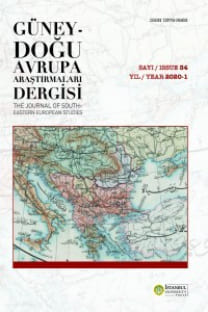OSMANL/ MiLLET SiSTEMi
Bu 111 akalede "Osman Ii Millet Sistemi "nin ana yap1s1 ele lmnu tir. Osman Ii tarihi tenninolojisinde "1nille1" kelimesi Musliiman olmayan topluluk veya gruplar i9i11 kullamlm1 ·/1r. Osmanli Devleti, tanda ·l nm etnik ya da dil krJkenine gore degil, dini inancma gore 111iflan 1111 ~· 11 . Bu da Miislii111a11 olanlar ve olmayanlar ~ek/inde ortaya 1k1111 t1r. Osmanh doneminde en onemli ~ey, din ve ai/eydi. Bu 111 akalede "Osman Ii Millet Sistemi "nin ana yap1s1 ele lmnu tir. Osman Ii tarihi tenninolojisinde "1nille1" kelimesi Musliiman olmayan topluluk veya gruplar i9i11 kullamlm1 ·/1r. Osmanli Devleti, tanda ·l nm etnik ya da dil krJkenine gore degil, dini inancma gore 111iflan 1111 ~· 11 . Bu da Miislii111a11 olanlar ve olmayanlar ~ek/inde ortaya 1k1111 t1r. Osmanh doneminde en onemli ~ey, din ve ai/eydi.
Anahtar Kelimeler:
Osmanli, Millet, Tark, Osmanh Dev!eti, is/am
THE OTTOMAN MILLET SYSTEM
This paper explores the main tenets of the millet system. Millet is an Arabic word that tran slated into English as nation. This term was not used 0nly for non-Muslims, but also for any nation. However, in the terminology of the Ottoman historians, it is mostly used to define non-Muslim communities. People were seen in the eyes of State not 0n the basis of ethnicity or language, but religion. "Religion, language, community, ethnicity, and family made up the socio-cultural fabric of the millet." For the period of the Ottoman, the most important thing was religion and supremacy of family: in other words, the millet system was in favour of "fusion of family and the community."
Keywords:
Ottoman, Millet, Turk, Ot1oma11 Stale, Islam,
___
- -
- ISSN: 0378-3863
- Başlangıç: 1974
- Yayıncı: İstanbul Üniversitesi
Sayıdaki Diğer Makaleler
AMERİKAN BOARD MİSYONERLERİNİN ANTEP’TEKİ FAALİYETLERİ VE ANTEP AMERİKAN KOLEJİ
OSMANLI DEVLETi'NiN KOSOVA'DA KAN DAVALARINI ÖNLEME ÇALIŞMALARI (1878-1912)
SAVAŞ YILLARINDA EGE ADALARINDAN TÜRKİYE'YE İLTİCALAR ( 1941-1945)
BULGAR MİLLİYETÇİLİĞİNİN ORTAYA ÇIKIŞI
KIRIM SAVAŞININ OSMANLI SOSYAL HAYATINA TESiRLERi
OSMANLI YÖNETİMİ'NİN GÜNEYDOĞU AVRUPA'YA TOPLUMSAL VE DİNİ ETKİLERİ
